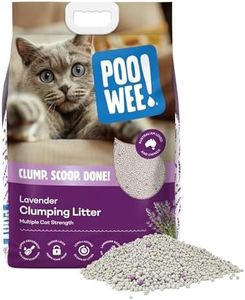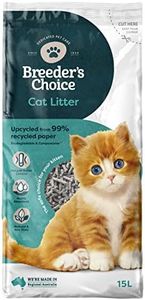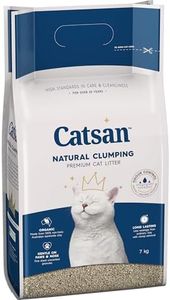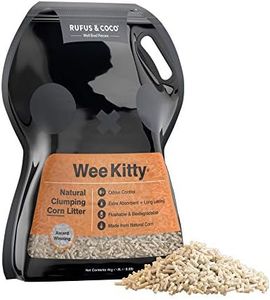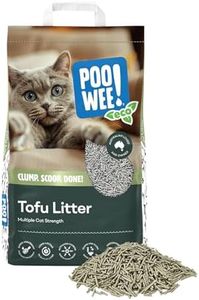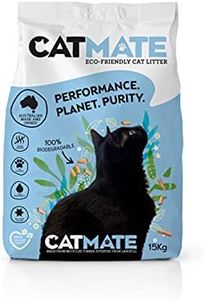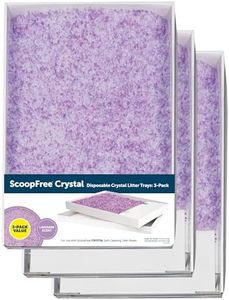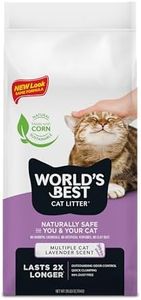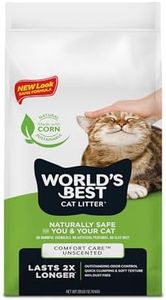We Use CookiesWe use cookies to enhance the security, performance,
functionality and for analytical and promotional activities. By continuing to browse this site you
are agreeing to our privacy policy
10 Best Low Tracking Cat Litter
From leading brands and best sellers available on the web.Buying Guide for the Best Low Tracking Cat Litter
Choosing the right low-tracking cat litter is all about comfort for both your cat and yourself. The goal is to find a litter that minimizes the amount of material that gets stuck to your cat’s paws and ends up scattered around your house. It's important to consider your cat’s habits, any sensitivities (like dust or scent), and how much effort you want to put into cleaning up. The right litter should strike a balance between reducing mess, being gentle on your cat's feet, and being easy to maintain. Think about your home environment—do you have carpets, hardwood floors, or areas where tracking would be especially noticeable? These factors will help guide your choice.Material TypeThe material of the cat litter impacts not only tracking but also things like absorption, smell control, and dust. Common materials include clay (clumping or non-clumping), silica gel, natural litters like corn, pine, or wheat, and recycled paper. Clay and silica often track less because they tend to form larger or heavier granules, while lightweight natural materials may stick to paws more. If you’re aiming to reduce tracking, look for coarser or heavier granules as these are less likely to cling to your cat’s feet. Also, your cat’s preference and any physical sensitivities (like dust allergies) should be a guiding factor in choosing the right material.
Granule Size and ShapeGranule size refers to how big or small the individual pieces of litter are, while the shape affects how easily they stick to paws. Small, lightweight, or fine granules often get wedged between toes and are easily carried out of the box, whereas larger, heavier, or rounded granules typically stay put. If tracking is your main concern, opt for litter with larger, more irregular granules, but make sure your cat is comfortable with the feel. Some cats dislike large or hard pellets, especially on sensitive paws, so observe their response and adjust if necessary.
Dust LevelDust is the powdery material given off by some litters, especially when pouring or when your cat digs. High dust levels can stick to fur or paws and get tracked out, plus it’s not good for respiratory health for you or your pet. To minimize tracking (and mess), look for low-dust or dust-free litters. If your cat or someone in your household is sensitive to airborne dust, choosing a low-dust option is even more important—these typically mention 'dust-free' or 'low dust' on the packaging.
Clumping AbilityClumping refers to the litter’s ability to form solid lumps when wet, making it easier to scoop and less likely to break apart and stick to paws. Strong, firm clumps tend to break down less, resulting in fewer small particles that can be tracked out of the box. If you want easy clean-up and less tracking, go for litters with a reputation for solid clumping. However, some non-clumping natural or pellet-based litters also track less due to their size and weight, so consider your clean-up preference and cat’s comfort.
Absorbency and Odor ControlA litter’s absorbency affects how well it locks in moisture and prevents wet spots, which can be sticky and get tracked outside the litter box. Litters with high absorbency dry quickly, so your cat’s feet stay clean. Additionally, odor control keeps smells at bay, which, while not directly affecting tracking, is an important comfort factor for you and your pet. If your primary concern is a tidy home, an absorbent litter with strong odor control will help keep the area pleasant.
